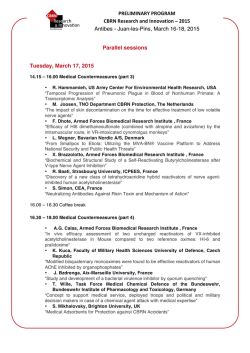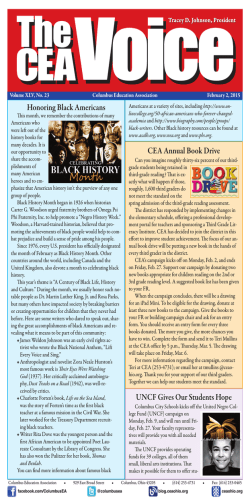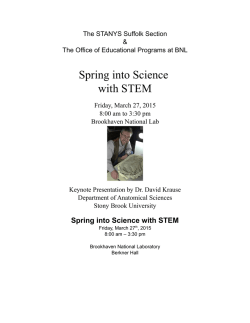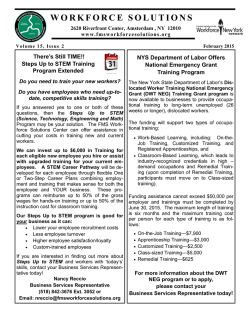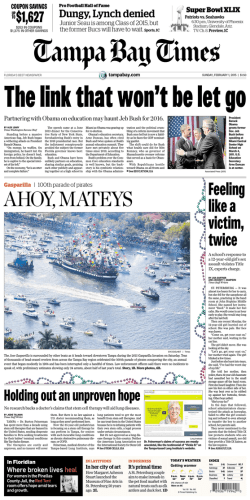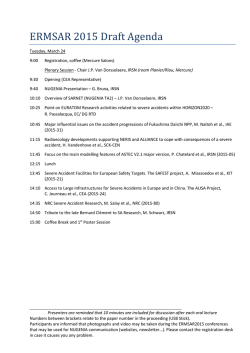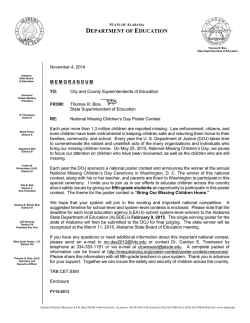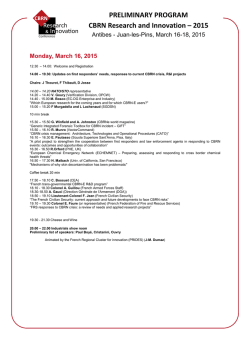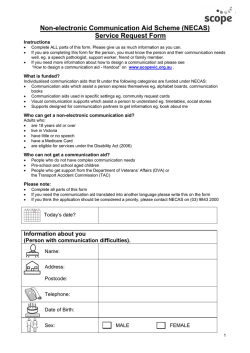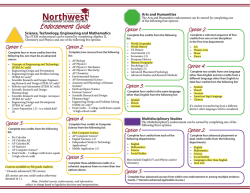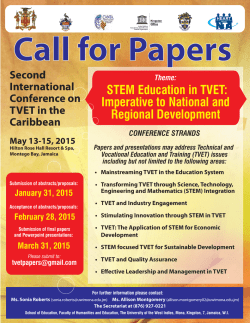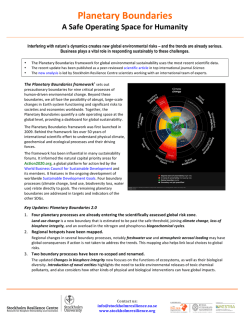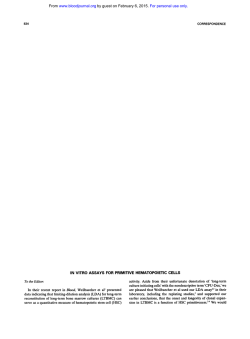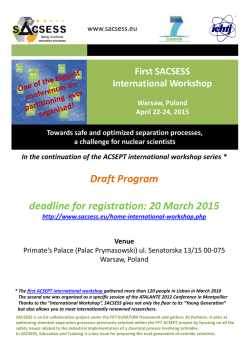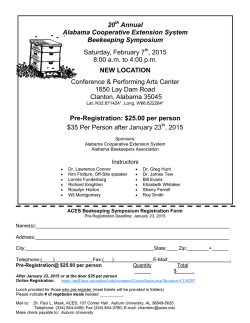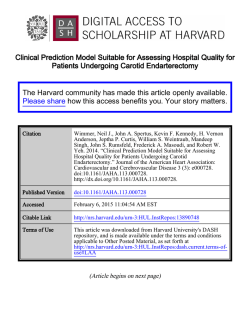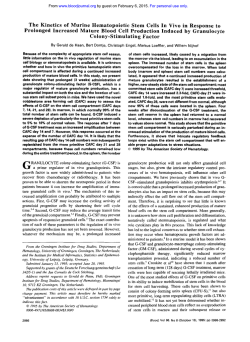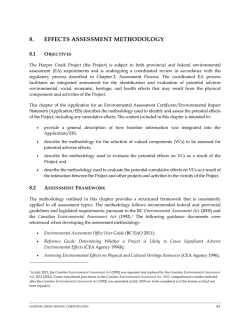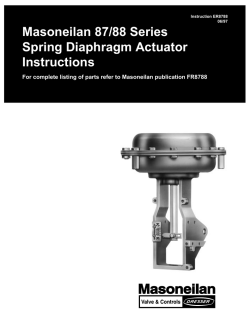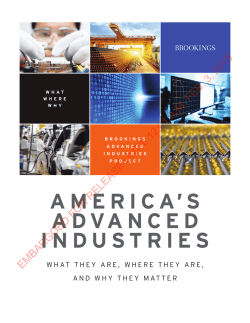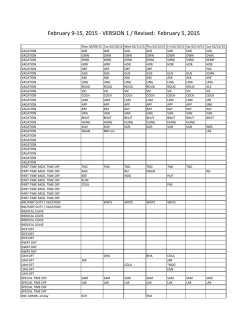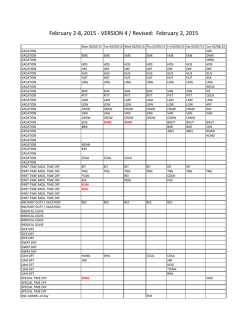
The Innovative System Project for the Increased Recruitment of
46th Lunar and Planetary Science Conference (2015) 1393.pdf THE INNOVATIVE SYSTEM PROJECT FOR THE INCREASED RECRUITMENT OF EMERGING STEM STUDENTS (INSPIRESS) . M.P.J. Benfield1, M.W. Turner1, and B.K. Mitchell2, 1The University of Alabama in Huntsville (301 Sparkman Drive, Huntsville, AL 35899), 2NASA Marshall Space Flight Center (Mail Code FP20, MSFC, AL 35812). Introduction: The Innovative System Project for the Increased Recruitment of Emerging STEM Students (InSPIRESS) project, provides the opportunity for high school students to design and develop a scientific payload for a conceptual NASA planetary science missionof-interest, via an engineering design challenge. Over the course of a semester, teams of high school students determine the science objective(s) of their payload in order to develop engineering requirements, develop alternative solutions and down-select using decision analysis techniques, apply science and mathematical theories to their payload’s concept of operations in order to determine key design parameters, and understand the importance of effective engineering communication via reports and briefings delivered to external professional review boards. Operating in its sixth year, the InSPIRESS project has seen dramatic growth, from 30 to approximately 500 students per year, in North Alabama and Southern Tennessee, even expanding as far as El Paso, Texas. In academic year 2013-2014, 495 high school students participated in the program with another 18,000 middle and elementary school students impacted via the Community Engagement Activity events. Interaction: A unique feature of the InSPIRESS project is the interaction between UAH undergraduate senior design students in Mechanical and Aerospace Engineering (MAE) and Industrial and Systems Engineering (ISE) and the high school students. The UAH undergraduates serve as team mentors, offering guidance and advice, as issues arise, in the development of the science payload. Furthermore, the interim design reviews in the InSPIRESS project are staffed by the undergraduate students, which offers benefits for both the high school and the college students: while the high school students are questioned by individuals with an intimate knowledge of the proposed mission, the college students learn the roles, responsibilities, and expectations of a being a customer. Feedback from this experience has been positive on both sides. Community Engagement Activity: An exciting new component of the program is the Community Engagement Activity (CEA). The purpose of the CEA is to have the high school teams engage with the local community, usually the middle and elementary schools nearby, in activities that help explain the high school team’s proposed payload design for the planetary science mission. Through near-peer relationships with the high school students, the middle and elementary school students understand specific science and engineering concepts related to the project as well as see that continued interest in science and engineering can be exciting and rewarding. In most of the participating high schools, the CEA has become their primary avenue for community outreach. Teachers, school administrators, and parents have all commented on the effectiveness of this component. Figure 1 is selected photos from the CEA events that have occurred over the past year. Figure 1. Selected Photos from CEA Events Competition: To win the InSPIRESS design challenge, teams must excel in the areas of engineering design, technical communications, and marketing that are combined into two products: the payload concept design and the Community Engagement Activity. Both products are detailed in three deliverables which are evaluated by a different audience within the local North Alabama professional community. The Payload Concept Proposal, evaluated by the undergraduate senior design students, is a report detailing the development and design of the team’s scientific payload for a NASA planetary science mission of interest and the results of their CEA events. The Final Review, evaluated by local aerospace professionals, is a twenty-minute in-person briefing where the high school teams explain their designs and the decisions they made in order to accomplish their chosen science objective(s), while staying within the constraints of the project as well as the planning, conduct, and results of their CEA events. The Open House Poster Session, evaluated by professionals from the local community, is a tradeshow/exhibition summarizing the payload concept design developed and the CEA events conducted by the high school team. Figure 2 depicts selected photos from the Open Houses and Final Reviews conducted over the past year. 46th Lunar and Planetary Science Conference (2015) Figure 2. Selected Photos from Open House and Final Review Summary: Through the InSPIRESS project, participating students understand the interdependencies of Science, Technology, Engineering, and Mathematics, the roles and responsibilities of STEM professionals, and the benefits to society that STEM provides. By solving a large, complex problem, students gain the confidence to pursue a STEM career. Via this educational experience, we hope to increase the flow-rate in the STEM pipeline. To increase this flow-rate, the InSPIRESS project is beginning to push into more rural areas of Alabama in an effort to engage students not normally exposed to STEM activities. The goal is to positively change students’ perception of STEM while increasing their interest in a STEM career and their selfefficacy in working in STEM. 1393.pdf
© Copyright 2024
